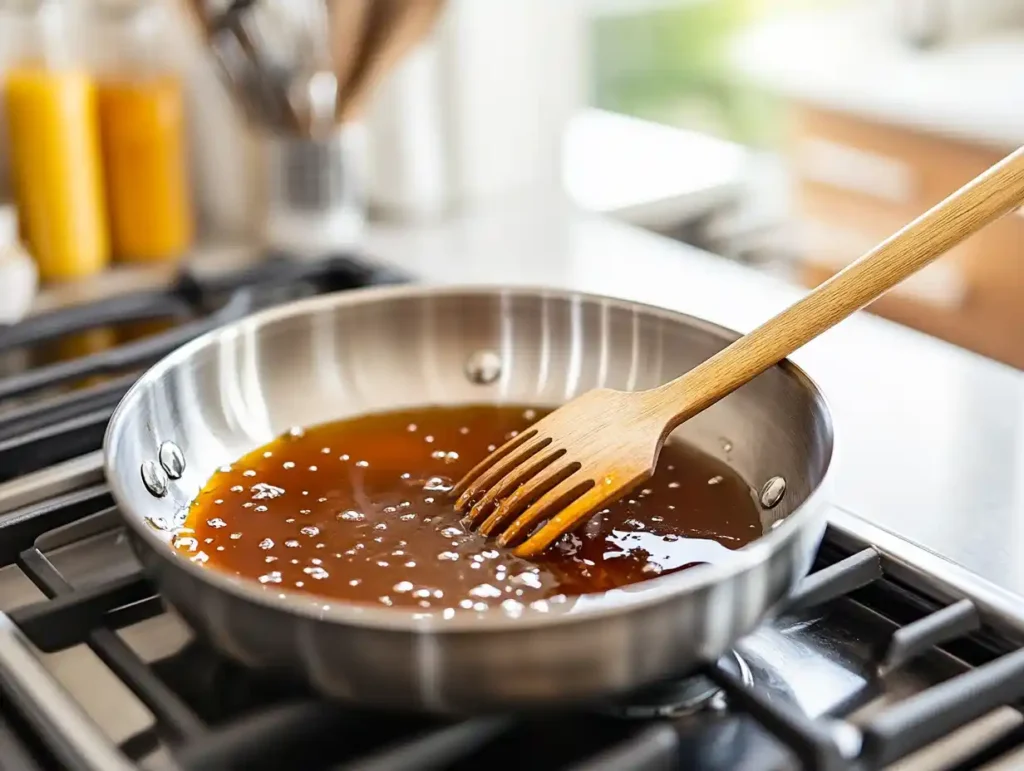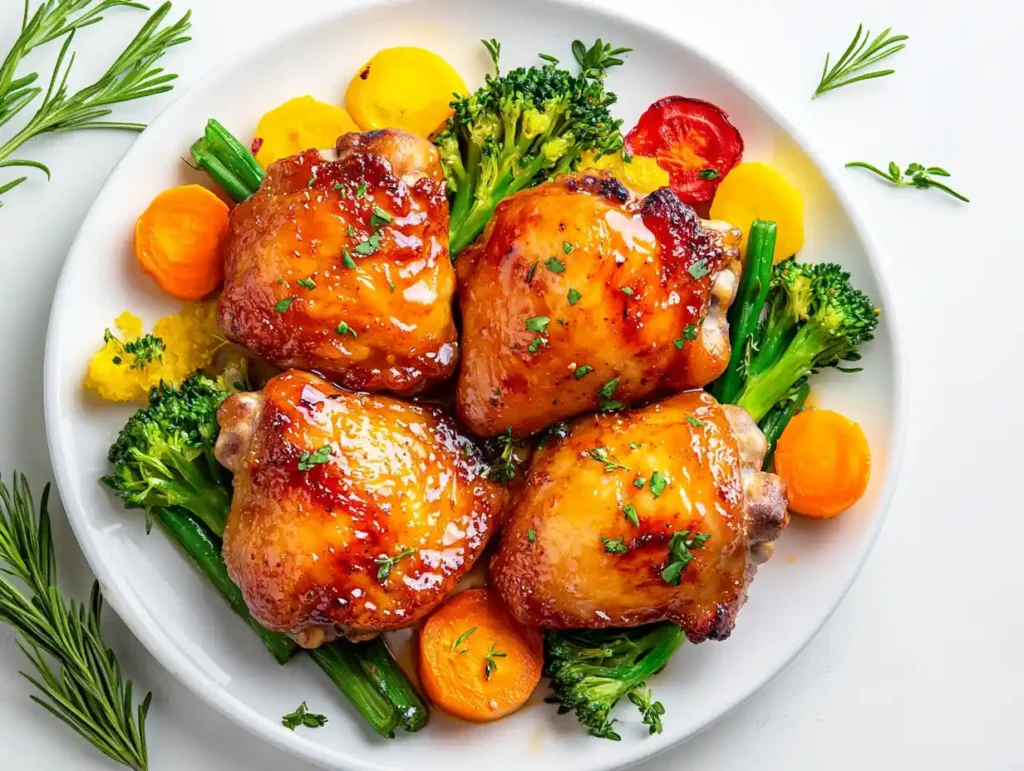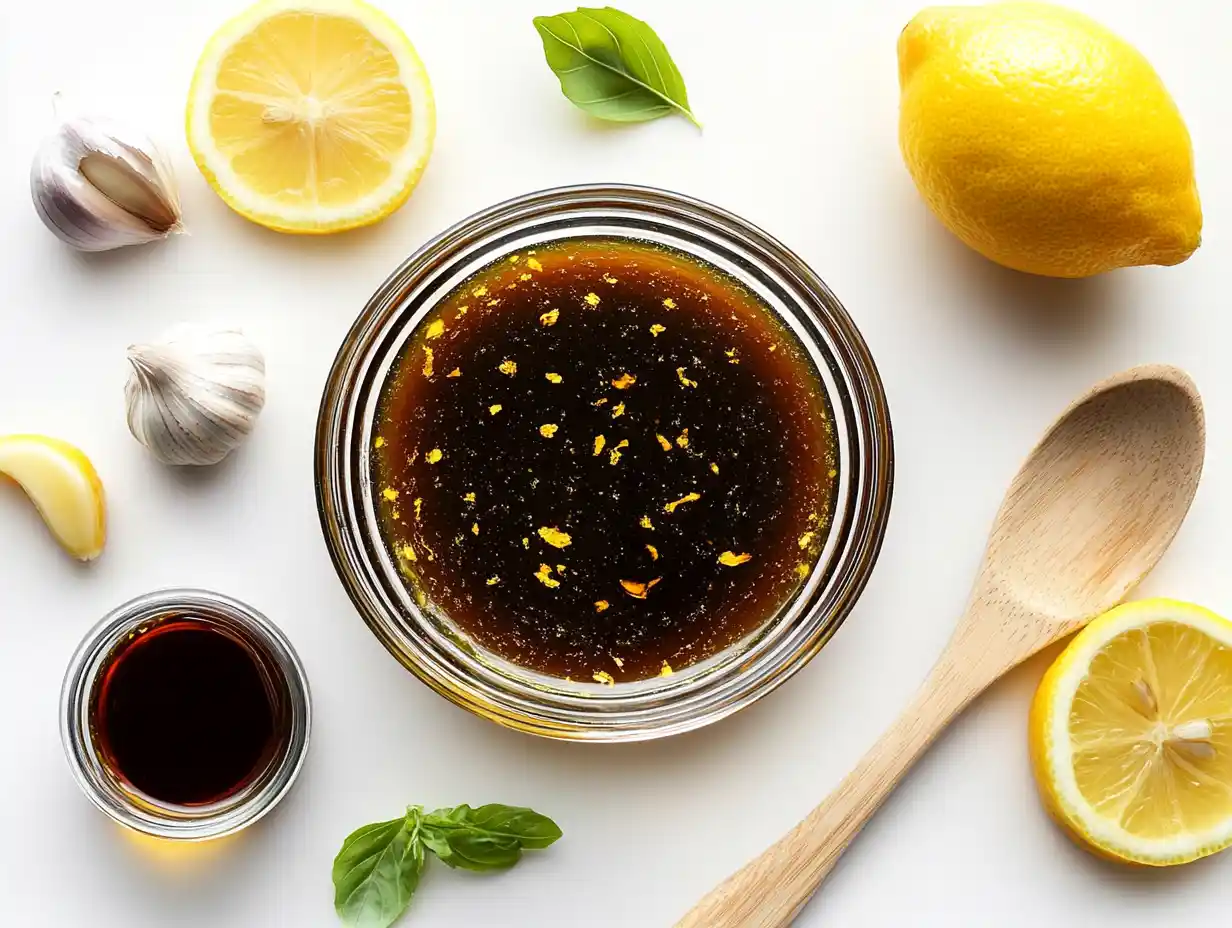Introduction
Honey glaze sauce is a delightful blend of sweet and savory flavors that elevates any dish it touches. From tender meats to roasted vegetables and even desserts, this versatile condiment has a way of adding richness and depth. But what exactly goes into making this culinary marvel? The answer lies in the simplicity and balance of its ingredients, which work harmoniously to create a glossy, flavorful sauce.
Culinary enthusiasts and professional chefs alike love honey glaze sauce for its adaptability. Whether you prefer it spicy, tangy, or purely sweet, the base recipe can be easily customized to suit your taste. It’s a staple in cuisines around the world, particularly in BBQs, holiday roasts, and decadent baked goods.
In this article, we’ll dive deep into the components of honey glaze sauce, explore variations, and provide expert tips to help you create your own perfect glaze at home.
Key Ingredients
Honey as the Star Ingredient
Honey is the star of this glaze, delivering natural sweetness and a silky texture. Its golden color enhances the sauce’s appeal. The type of honey matters—clover honey provides mild sweetness, while wildflower honey offers a more robust flavor. Choose based on your dish’s needs.
Balancing Flavors with Acidity
Acidity balances the glaze’s sweetness, creating harmony. Common options include apple cider vinegar, balsamic vinegar, or fresh lemon juice. These ingredients cut through the sweetness, adding brightness and complexity. The tanginess not only enhances the flavor but also prevents the glaze from tasting overly rich. For a fruity twist, orange or lime juice can add an exciting citrusy layer. These acidic elements ensure the glaze complements both savory and sweet dishes effortlessly.
Essential Supporting Ingredients
To complete the glaze, you’ll need a few key additions. Butter adds richness, soy sauce introduces saltiness, and garlic or ginger infuses bold flavor. For a spicy kick, consider chili flakes or sriracha. Dijon mustard and Worcestershire sauce can also bring depth.
Step-by-Step Preparation

Preparing the Base
Start by melting butter in a pan over medium heat. Add minced garlic or ginger for a savory, aromatic base. Stir until the ingredients release their fragrance, usually within a minute or two. Then, pour in the honey and stir it gently, ensuring it melts smoothly into the butter.
Customizing the Flavor
Once the base is ready, introduce your acidity. Add a splash of apple cider vinegar, lemon juice, or balsamic vinegar. For savory depth, stir in soy sauce or Worcestershire sauce. If you want a spicy edge, toss in chili flakes or a dash of hot sauce. Taste as you go, adjusting the ingredients to match your preferences.
Ensuring the Right Consistency
Bring the mixture to a gentle simmer, stirring constantly. This step allows the sauce to thicken and develop its signature glaze-like texture. Be patient; the process typically takes 5–10 minutes. The sauce should coat the back of a spoon without dripping too quickly. If it’s too thick, add a splash of water to thin it out.
Let the glaze cool slightly before using. As it rests, it will thicken further, making it perfect for brushing over meat, veggies, or baked goods.
Variants of Honey Glaze Sauce
Sweet and Savory Honey Glaze
This classic version combines honey with soy sauce, garlic, and a splash of vinegar. It’s perfect for enhancing roasted meats like chicken or pork. Adding a touch of Dijon mustard gives it a tangy twist that pairs well with hearty dishes. The glaze caramelizes beautifully in the oven, creating a glossy, flavorful coating. It’s a versatile choice that also works wonderfully as a dipping sauce for appetizers.
Spicy Honey Glaze
For those who love a kick, a spicy honey glaze is the way to go. Chili flakes, sriracha, or cayenne pepper bring heat, while the honey provides a sweet balance. This glaze is fantastic for barbecue ribs, wings, or grilled vegetables.
Citrus-Infused Honey Glaze
A citrusy honey glaze offers a zesty flavor that works wonderfully on seafood or roasted vegetables. Fresh orange or lime juice brightens the sauce, while grated zest adds depth. This version is ideal for light, summery dishes or holiday feasts.
Herb-Enhanced Honey Glaze
For a more aromatic twist, incorporate fresh herbs like rosemary, thyme, or basil. These herbs complement the sweetness of the honey and pair beautifully with lamb or roasted potatoes. A sprinkle of herbs during cooking enhances both flavor and presentation.
Pairing Honey Glaze Sauce with Dishes

Ideal Meats for Honey Glaze Sauce
Honey glaze sauce shines when paired with meats. It’s a classic choice for chicken, whether grilled, roasted, or baked. The glaze caramelizes beautifully, adding a sticky, flavorful crust. Pork dishes, such as tenderloin or ribs, benefit from the glaze’s sweet and savory balance. For red meat lovers, lamb chops or meatballs coated with honey glaze offer a gourmet touch.
Vegetarian Options
Honey glaze isn’t just for meat—it works wonders on plant-based dishes. Roasted vegetables, such as carrots, Brussels sprouts, or sweet potatoes, come alive with the sauce’s rich flavor. You can also drizzle it over baked tofu or grilled mushrooms for a hearty vegetarian option. For something unique, try tossing honey-glazed nuts into salads or grain bowls.
Desserts and Baked Goods
Surprisingly, honey glaze sauce has a sweet side. It makes a delightful topping for desserts like cakes, cheesecakes, or pastries. Drizzle it over cinnamon rolls or baked apples for a comforting finish. You can even brush it on breadsticks or croissants for an unexpected twist.
Pairing with Seafood
Honey glaze complements seafood beautifully. Salmon fillets brushed with a citrus-infused honey glaze offer a perfect balance of sweet and tangy flavors. Shrimp skewers glazed and grilled create a light, flavorful meal. Even scallops or lobster tails benefit from a touch of honey glaze.
Tips for Perfecting Honey Glaze Sauce
Achieving the Perfect Consistency
The right consistency is key for a successful honey glaze. Simmer the sauce over low heat, stirring frequently. Aim for a texture that coats the back of a spoon but doesn’t drip excessively. If the glaze is too runny, let it cook a bit longer to thicken. If it’s too thick, add a small amount of water or juice to adjust.
Balancing Sweetness and Tanginess
Achieving balance in your honey glaze is all about tasting as you go. If the glaze is overly sweet, a splash of vinegar or lemon juice can bring it back in line. For extra depth, soy sauce or Worcestershire sauce adds savory notes. If the acidity is overpowering, a drizzle of additional honey can sweeten the mix.
Storage and Reheating Tips
Honey glaze can be stored for later use. Pour any leftovers into an airtight container and refrigerate for up to a week. When reheating, use low heat to avoid scorching the sugars in the glaze. If the sauce has thickened too much in the fridge, stir in a bit of water or broth while warming it.
Experimenting with Additions
Don’t be afraid to get creative with your honey glaze. Add a pinch of cinnamon for warmth or smoked paprika for a BBQ flavor. Fresh herbs like thyme or parsley can give the glaze a fresh, aromatic twist. Adjust the flavors to match the meal you’re preparing.
FAQs
Can You Make Honey Glaze Without Honey?
Yes, you can substitute honey with alternatives like maple syrup, agave nectar, or brown sugar. While these options mimic the sweetness, each brings its unique flavor profile. Maple syrup adds a woody sweetness, while agave is milder. Brown sugar creates a caramel-like taste, but you may need to adjust other ingredients for balance.
What Substitutes Work Best for Acidity?
If you don’t have vinegar or citrus juice, there are other options. White wine, rice vinegar, or even tamarind paste can replace traditional acidic ingredients. Experiment with these substitutes to find a tanginess that suits your dish.
How Long Does Honey Glaze Last in Storage?
Honey glaze can last up to a week in the refrigerator if stored in an airtight container. For longer storage, consider freezing it in small portions. When reheating, stir thoroughly to bring back the original texture and flavor.
Can You Make a Healthier Version of Honey Glaze?
Absolutely! Replace butter with olive oil for a lighter version. Use natural, unprocessed honey and reduce the amount of sugar or salt. Adding fresh herbs or spices can enhance flavor without increasing calories.
Does Honey Glaze Work on Desserts?
Yes! Honey glaze works wonderfully on baked goods. Drizzle it over muffins, cookies, or pies for added sweetness and a glossy finish. It can also be used as a dip for fresh fruits, making it a versatile choice for desserts.
Is Honey Glaze Suitable for Vegan Diets?
Traditional honey glaze isn’t vegan due to the use of honey. However, swapping honey for agave nectar or maple syrup can make the recipe vegan-friendly. Ensure all other ingredients, like butter or sauces, align with vegan requirements.
Conclusion
Honey glaze sauce is a simple yet transformative ingredient that brings a touch of elegance to any dish. Its versatility lies in the balance of sweet and savory flavors, making it ideal for meats, vegetables, seafood, and even desserts. With just a few key ingredients—honey, an acidic component, and seasonings—you can create a glaze that’s rich, glossy, and bursting with flavor.
Whether you’re a seasoned chef or a home cook, honey glaze sauce is easy to master and endlessly customizable. From spicy variations to citrus-infused twists, the possibilities are endless. Plus, with proper storage and thoughtful ingredient swaps, you can adapt this recipe to fit your dietary needs or preferences.
Next time you’re looking to elevate a meal, try whipping up a batch of honey glaze sauce. The rich texture, deep flavors, and beautiful shine are sure to impress your family and guests alike.
For more sweet and savory sauce ideas, check out our guide on honey garlic sauce for a flavorful twist. If you’re curious about troubleshooting sauces, learn why honey garlic sauce might not thicken. Lastly, explore what is honey garlic sauce made of for a deeper dive into its ingredients!

